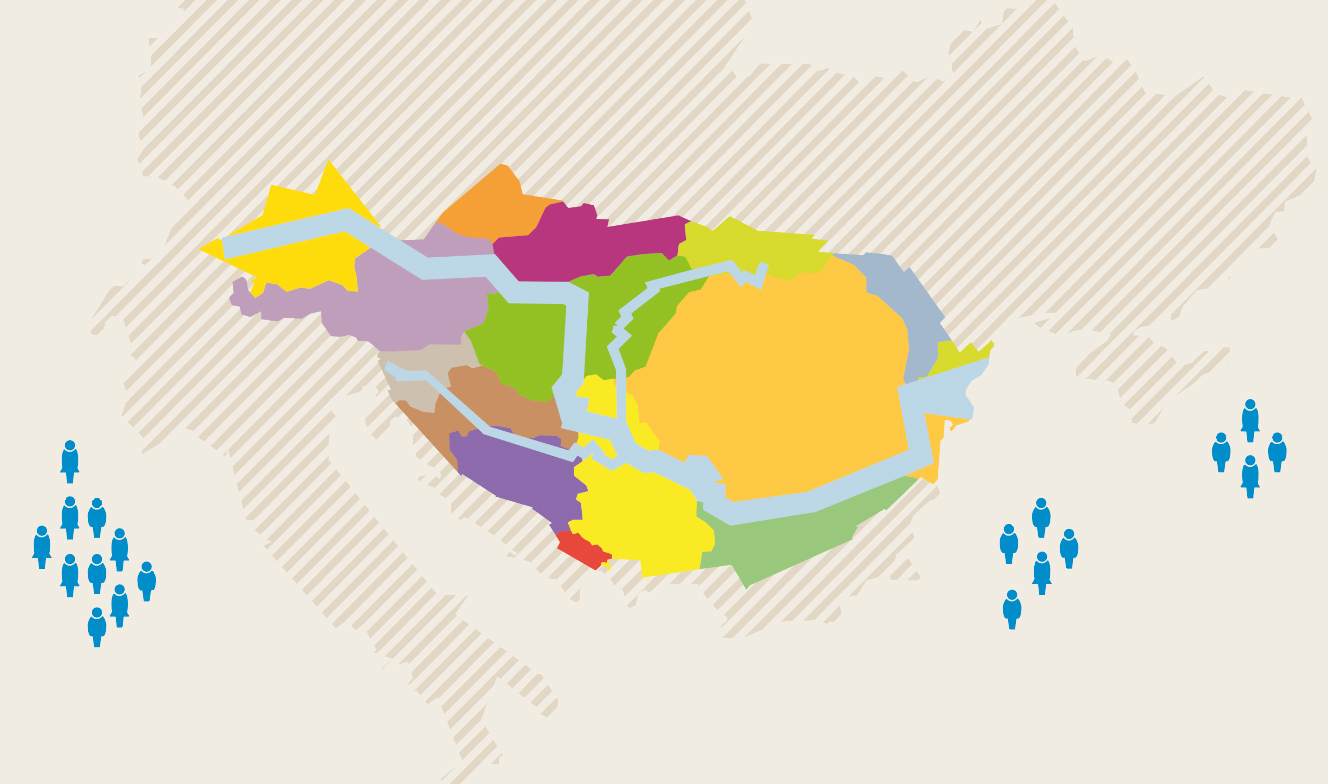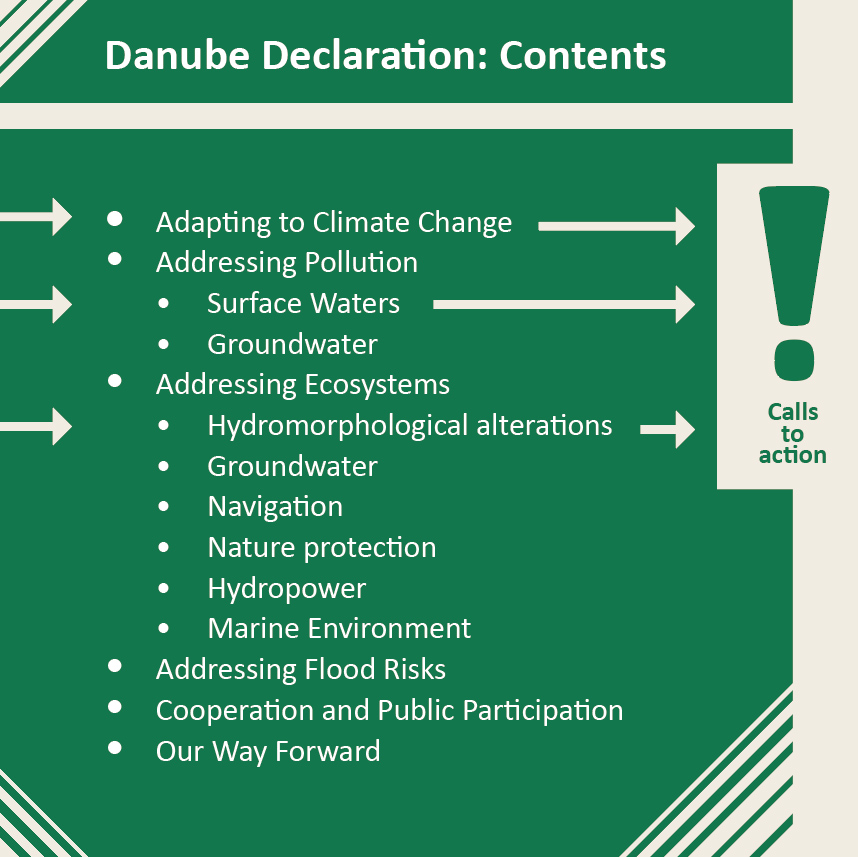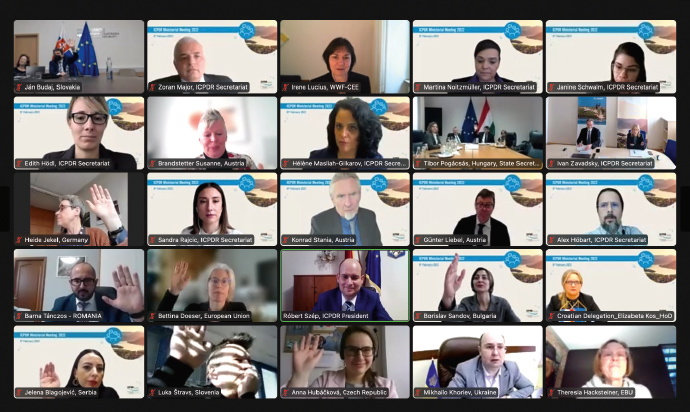Danube Watch 3/2021 - The Danube Declaration 2022–2027: A Renewal
The Danube Declaration 2022–2027: A Renewal

At the ICPDR’s 4th Ministerial Meeting held on 8th February 2022, Ministers and Minister Representatives responsible for water management from Austria, Bosnia and Herzegovina, Bulgaria, Croatia, the Czech Republic, Germany, Hungary, Montenegro, Moldova, Romania, Serbia, Slovakia, Slovenia, Ukraine, and the European Union came together to endorse the ministerial “Danube Declaration”.
So…What is this Declaration? What does it mean for the next six years of the Danube River Basin? Let’s explore what makes the ICPDR’s 2022 Danube Declaration such a powerful step forward towards cleaner, healthier, and safer waters for the entire Danube River Basin and all its inhabitants…
At the ICPDR’s 4th Ministerial
Meeting held on 8th February 2022, Ministers and Minister Representatives responsible for water management from Austria, Bosnia and Herzegovina, Bulgaria, Croatia, the Czech Republic, Germany, Hungary, Montenegro, Moldova, Romania, Serbia, Slovakia, Slovenia, Ukraine, and the European Union came together to endorse the ministerial “Danube Declaration”.
So…What is this Declaration? What does it mean for the next six years of the Danube River Basin? Let’s explore what makes the ICPDR’s 2022 Danube Declaration such a powerful step forward towards cleaner, healthier, and safer waters for the entire Danube River Basin and all its inhabitants…
Every six years, a new and updated ‘Danube Declaration’ is signed and adopted by ICPDR contracting parties, updating, and extending the objectives and direction-of-travel for the River Basin. It’s a vital part of the strengthening of the ICPDR’s goals for improving and maintaining the Danube River Basin. Every Danube Declaration so far has of course highlighted the significance of the ICPDR as a coordinating mechanism within the basin for matters of transboundary water management – but each one also brings new issues to the table and revises old approaches for the future of transboundary water management.
 Context
Context
In its preamble, the 2022 Danube Declaration asserts the foundation upon which it – like the ICPDR itself – is built. The Declaration reasserts the Danube River Protection Convention, the document whose signing in 1994 led to the birth of the ICPDR. It appreciates the ICPDR’s work as a body to ensure cooperation on the EU’s WFD and FD while acknowledging how important it is for EU and non-EU states to cooperate on these important directives. It reiterates the ICPDR’ three pillars of action: cleaner, healthier, and safer waters with a view to a healthier Black Sea ecosystem too. Finally, it welcomes the “transformative framework provided by the European Green Deal”. This preamble demonstrates the nature of this Declaration as the keystone in the incrementally evolving framework of the ICPDR, and comprises a list of shared values and aims in the basin that grows every six years, broadening and strengthening a sense of fruitful transboundary cooperation in terms of both spirit and policy.
Ready for Change
In 2022, the Danube Declaration isn’t mincing its words about addressing Climate Change. In 2018, the ICPDR already updated its own excellent Climate Change Strategy, laying out a way forward in the face of impending environmental shifts. Additionally, the ICPDR even recently added ‘Effects of Climate Change’ as a new, fifth SWMI (Significant Water Management Issue) – essentially making resilience to climate change one of the KPIs for the Danube. In this year’s Declaration, measures are even more concretely built too. In the text, Ministers call for the development of “sustainable adaptation measures to urgently enhance resilience of aquatic ecosystems to climate change impacts”, not to mention support for “water balance activities” and the enhancement of relevant good practices cooperation and exchange. It might be brief, but it’s a forward-facing and bold declaration of intent ready to meet the expectations and aspirations of the world’s most international river basin at a moment where we find ourselves at the thin end of the Climate Change ‘wedge’.

The moment at the 4th Ministerial Meeting when Ministers and representatives from throughout the Danube River Basin voted to adopt the Danube Declaration 2022
Targeting Pollution
As shown in the results of successive Joint Danube Surveys (JDSs – visit danubesurvey.org for more) amongst other monitoring efforts, the ICPDR can be proud of the progress made on limiting hazardous and polluting emissions into the waters of the Danube River. Despite immense pressures, the surface and groundwaters are in large part healthy, with the results of JDS4 in 2019-2020 showing the benefits of restoration efforts in various key indicator species and the resilience of Danubian biodiversity. As with all things environmental however, there remains little time for self-congratulating – and the Danube Declaration makes clear a real sense of action.
Article 13 of the Danube Declaration 2022 commits the basin to implementation of additional necessary actions for surface waters, namechecking urban spaces, industry and mining plus agriculture as key candidates for future action. Article 14 highlights the determination of ICPDR contracting parties to implement policy recommendations on reducing pollution and improving both hazardous substances management and the safety of tailings management facilities (a continually quiet danger stemming from the vital mining industries in our region). Vitally, article 15 of the 2022 Danube Declaration specifically commits to maintaining and updating as necessary key technical instruments including the the Danube Transnational Monitoring Network (TNMN) and Danube Accident Emergency Warning System (AEWS).
Multifaceted Actions to Preserve a Multifaceted Basin
Elsewhere, the Declaration turns its focus to biodiversity and protecting migration corridors and complex ecosystems disrupted by manmade developments. Sturgeons continue to be a priority species for example, providing a key indicator for a variety of riverine lifeforms under threat by river blockages such as the Iron Gates dam. Additionally though, upholding healthy and sustainable river-based sectors such as hydropower, inland navigation, and groundwater extraction remains a complex focus of the Danube Declaration. While connected to a variety of environmental impacts, industries such as these are still vital to maintain, and contribute to achieving a variety of Sustainable Development Goals in the Danube River Basin. In this sense, the nuanced approach to creating a sustainable future Danube described in this declaration is about forging fruitful partnerships with, say, hydropower as much as conservation bodies.
In short, the 2022 Danube Declaration goes a long towards preparing for six years of facing down future challenges. Preparing the Danube River Basin to play its part in a broader European project is a priority for which we must make no half measures. This Declaration does just that, signalling a bolder programme of measures to be taken that could put the Danube River Basin at the forefront of an ever-greener European continent.






